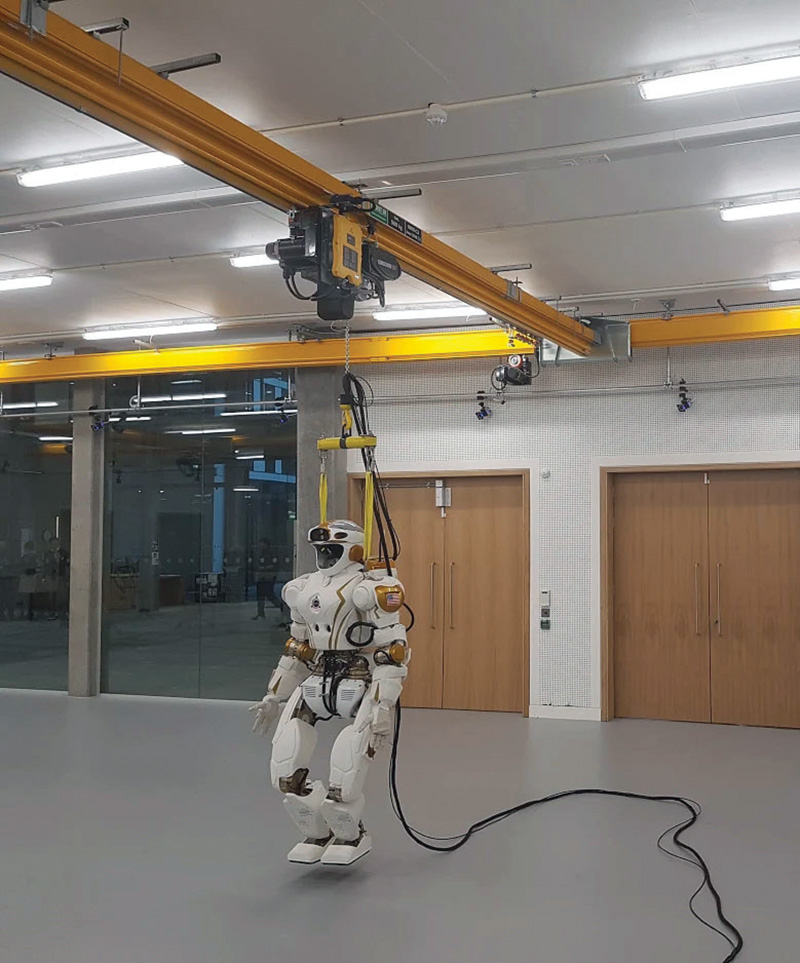Slide of the Valkyrie: Verlinde helps robot stay upright
5 August 2019Verlinde has supplied a hoist used as a fall-arrest mechanism for NASA’s Valkyrie humanoid robot, which is currently being tested at the University of Edinburgh, UK.
The 1.8m-high robot walks on two legs, weighs 125kg, and is said to be one of the most advanced robots in the world. NASA plans for the robot to contribute to breakthroughs in humanoid control, motion planning and perception, and hopes that the Valkyrie will one day take part in a space mission to Mars.
PhD students and researchers from the Edinburgh Centre for Robotics are working to help the robot to make sense of its environment and improve manoeuvrability, as well as to interact closely and safely with humans and other machines. Falls are a common problem in this research, and so to protect the valuable robot from damage a safety hoist was installed.
Hoist UK, a distributor of Verlinde electric hoists, supplied the hoist and worked with the University of Edinburgh and two other key contractors on the project.
Staff at the university requested a 13.5m-long double-girder crane running the full length of the lab space, with a 6.5m-span bridge, to provide freedom for a variety of tests around the lab. Based on the requirements of the University, Hoist UK designed, tested and installed a radio-controlled double-girder crane system, with a Verlinde Eurochain VR5 series chain hoist on the 6.5m-span bridge. Both the hoist and bridge were rated with a safe working load of 500kg.
Two radio-controlled motorised crane bridges were fitted to the runways, one for immediate use and a second to accommodate future expansion of the project.”
Vladimir Ivan, research associate at the University of Edinburgh, said: "Working with Valkyrie is not a case of if it falls down, but when. We are pushing the robot to its limits in a controlled environment so that it is safer and more robust when it gets deployed outside of the lab. Hoist UK helped provide a valuable safety solution to allow our ongoing testing with the robot in a safe environment. We’re really pleased with the result and look forward to working with them in the future when we expand the programme further.”
Paul Jordan, director at Hoist UK, added: "Being a part of a program that will one day lead to people travelling to Mars was very exciting. Our team really enjoyed building a relationship with the robotics department at the University of Edinburgh. We’re very proud of the work we’ve done there, and excited to see what becomes of it in the future.”
